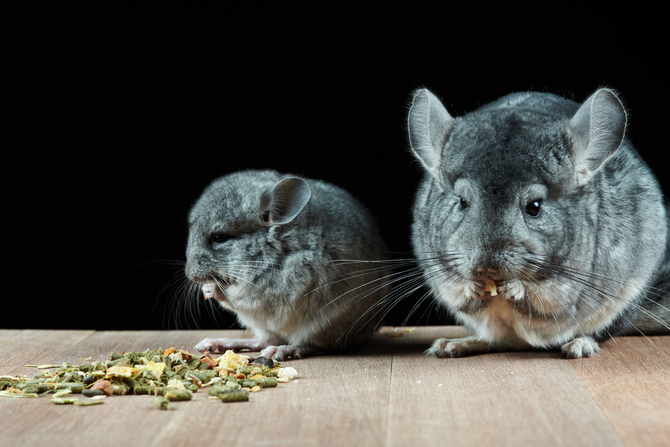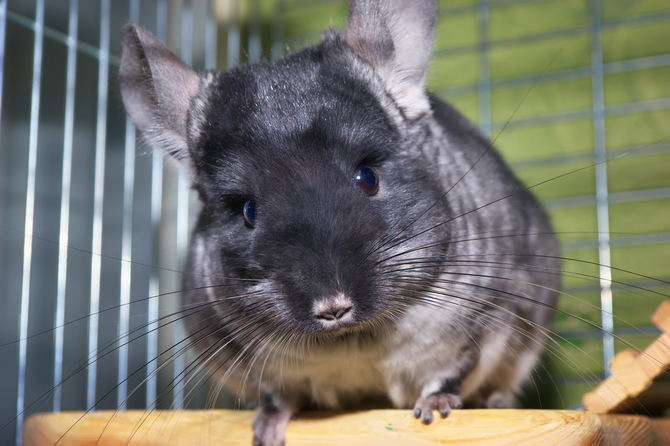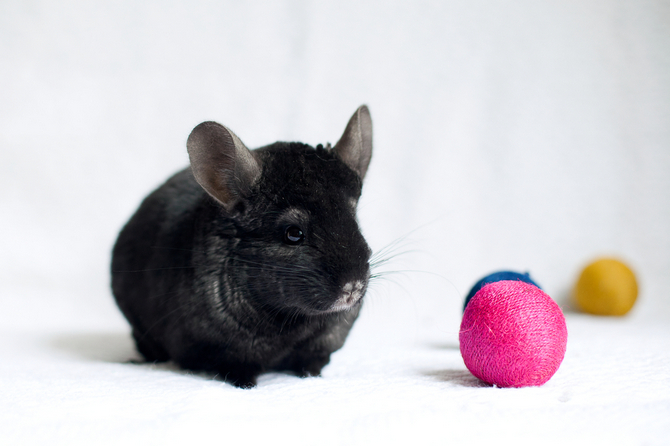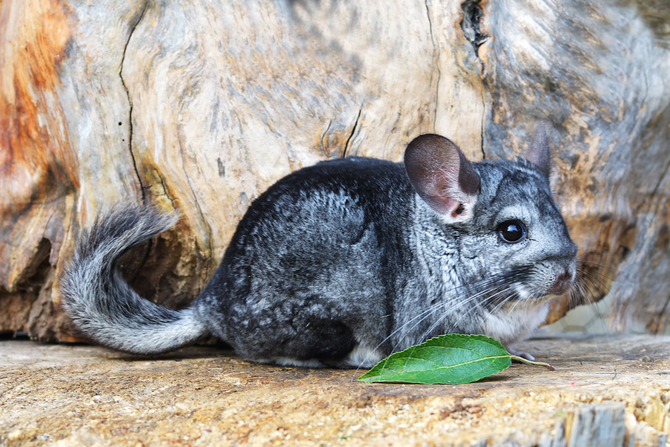If you are looking for a small, velvet soft, cute and cuddly pet, then the best choice will be a chinchilla. Literally, chinchillas have the softest and densest coat of any land animal. This makes them a joy to cuddle with, and they are pretty easy to take care of.
The word Chinchilla means “little Chincha” in Spanish.
The Chincha were a Native American people of Peru who lived around the Andes mountains. They were known for wearing the velvety soft coats of these furry and curious animals.
There are two species of chinchilla. The first, Chinchilla chinchilla (also known as Chinchilla brevicaudata), have a shorter tail and a thicker neck and shoulders. These can still be found living in the wild in Argentina, Bolivia, and Chile. The second species, Chinchilla lanigera have a long tail, longer ears and neck when compared to the first species. The second species is where the domestic chinchillas are descended from.
A chin is a popular choice for a pet. However, they require an experienced hand to raise them. Even if you do not have experience, you need to spend quite a lot of time and pay a lot of attention if you want to have a healthy pet.
Food & Diet

As natives of the Andes mountains, chins evolved to consume a diet that is high in fiber and roughage. As a result of this evolution, they have a very sensitive digestive system. If something ever happens and your chin falls ill, their digestive system is always the first culprit.
They are known to develop a condition called ileus. Chins need to eat and expel droppings. To avoid ileus, you have to feed your chin on a special diet. There are various foods that you can give your chin, but they have to be in moderation and combination.
There are a variety of hays that you can feed to your chin to ensure they are as healthy as they can be. The different types allow you to mix things up. There are also different types of pellet mixes and loose mixture feeds that you can use as treats.
Ensure that you only feed your chin the freshest feed available. Stale food has already lost most of its nutrients, and you will, therefore, be feeding your chin junk food. This can be detrimental to their overall health.
There are certain foods that you should not feed your chin. They adapted to living in the high and dry climate of the Andes. This means they adapted to having a dry diet.
Water
Freshwater is important for your chin, as the feeds may not contain enough moisture to sustain them. There are water bottles that are specifically made for chins. This allows them to hydrate whenever they want to. Always ensure that they have fresh water. Still water encourages the growth of algae and bacteria, which can cause your chin’s delicate digestive system to develop issues.
Supplement
A chinchilla that is fed on a well-balanced diet may not need to have supplements. However, there are special cases where the supplements may come in handy. This can be when the chin is pregnant or recovering from an illness. Sometimes a stressed chin may have trouble eating. Using supplements can help ensure they don’t miss out on vital nutrition.
Cage & Habitat

Chins are quite the active pet to have. So when it comes to picking out a cage for them, it would be best to pick one that keeps them properly housed. It should also have enough room to ensure the chins have room to play. A larger enclosure is also good as you can put all their toys and platforms in. This helps them keep themselves entertained as they have room to scamper around in, as well as chew toys to take the edge off.
One thing to consider is the quality of materials that the enclosure is made of. Chins have been known to be quite the masters of acrobatics and gymnastics. Choosing a wire enclosure will be important as this is a sturdy material. They can play as much as they want without worrying about breakages. Ensure that you pick one with small spaces in between. Your chin will attempt to escape their enclosure. If they find enough space between the wires, they surely will.
The enclosure you pick should also make it easy for you to clean. Even though a wireframed bottom makes cleaning very easy, it is not recommended. The spacing in between the wires can result in foot injuries for your chin. A solid base would be a better place to have your chin rest on.
Toys & Accessories

Your velvety chin is one active and playful animal. You will, therefore, need to have some toys and accessories handy. This is vital to keeping them happy and engaged. Some toys are also helpful when it comes to wearing down their ever-growing teeth.
A dust bowl is the most important toy, nay, accessory that a chin will need. This is an evolutionary trait. It is how chinchillas manage to keep their coats feeling lush and silky. Your chin absolutely loves rolling in the dust.
Again, like all rodents, a chinchilla’s teeth keep growing throughout their lives. To prevent any dental discomfort or issues, they need to chew on things that help wear down their teeth. A good way is to provide them branches from trees to chew on. Untreated wood and rope toys from the bird section of a pet store can also be excellent chew toys.
Also, they love climbing so adding platforms inside the cage will give them plenty of places to work towards climbing and perching on.
Chins will easily and readily use exercise wheels. If you’d like to put one in their cage, ensure you pick one that has a solid base. Spoked wheels can cause limb injuries to your chin.
Health & Illness

Like all pets, your chin will need to be well looked after. A healthy chin is a playful and active chin. They are susceptible to some illnesses though.
The biggest concern for them is developing ileus. This is the inability to pass droppings as a result of a blockage in their digestive tracts, but it is treatable (managing and treating Ileus in chinchillas). It is usually characterized by bloating. A chinchilla cannot naturally pass gas or vomit. If left untreated, it may result in your velvety pet passing on. A quick visit to the vet should prevent this though.
Another major issue is something all rodents face — the continued growth of their teeth throughout their lifetime. This is easily prevented by providing your chin with plenty of hay to chew on. Chew toys are also a good way to keep them engaged and also to prevent dental issues.
It is recommended to have a companion for your chin. This is best done by having same-sex pairs. If you want to have a male and a female pair, or even two males, it would be best to have them neutered and spayed. This is to ensure they do not increase their population without your input. Neutered males will also be less aggressive towards each other.
Your chin may hide an illness from you. It may be best to regularly check up on them to see if there are any behavioral changes in them. Whenever they become overly lethargic or do not respond as normal for more than six hours, pick up your pet and head to the vet.
Where to get a chinchilla?

There are a few ways you can get one.
The first option is to visit a breeder. Getting one from a breeder has the advantage of knowing about their health history, if there are any issues, and their temperament.
The second option is to visit a pet store. They may be kept away during the day as they are active at dawn and dusk. Daytime activities can stress chinchillas. Ensure that you can check out the chin for any issues while still in the shop. If they refuse, walk away.
The third option, and probably the best, is to adopt a chinchilla. There are a lot of unwanted chins out there. These are putting pressure on the rescue centers. Adopting one will go a long way in helping it get the care it needs.
Apart from a chinchilla, what other small pet can you get?

There are other small pets out there that you can choose to have. A ferret is a good example. They are naturally friendly, curious, and intelligent. They also make for good companions.
Rabbits are quite similar to chinchillas, though some are larger. Their cheeky fluffiness and playfulness make them a great pet for your kids. They are also a good way to start teaching your kids responsibility as they don’t require as much attention as a chinchilla.
Another good alternative is a hedgehog. These natives of Africa make terrific pets. One thing to note though, they are not for everyone. Their backs are covered in spikes. They should be handled with care to avoid chances of you getting injured.